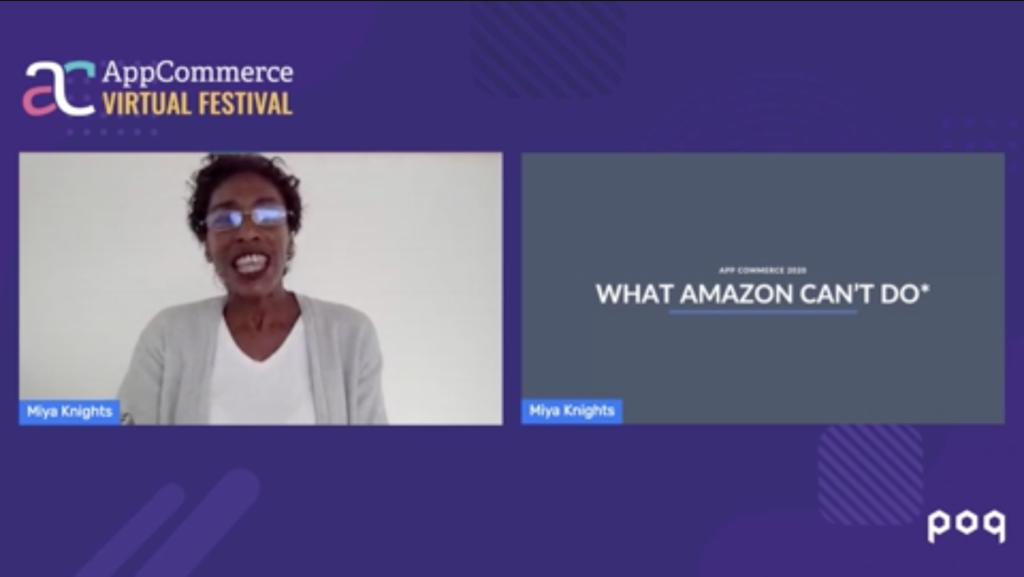Day 1 – AppCommerce Virtual Festival 2020 Round-up
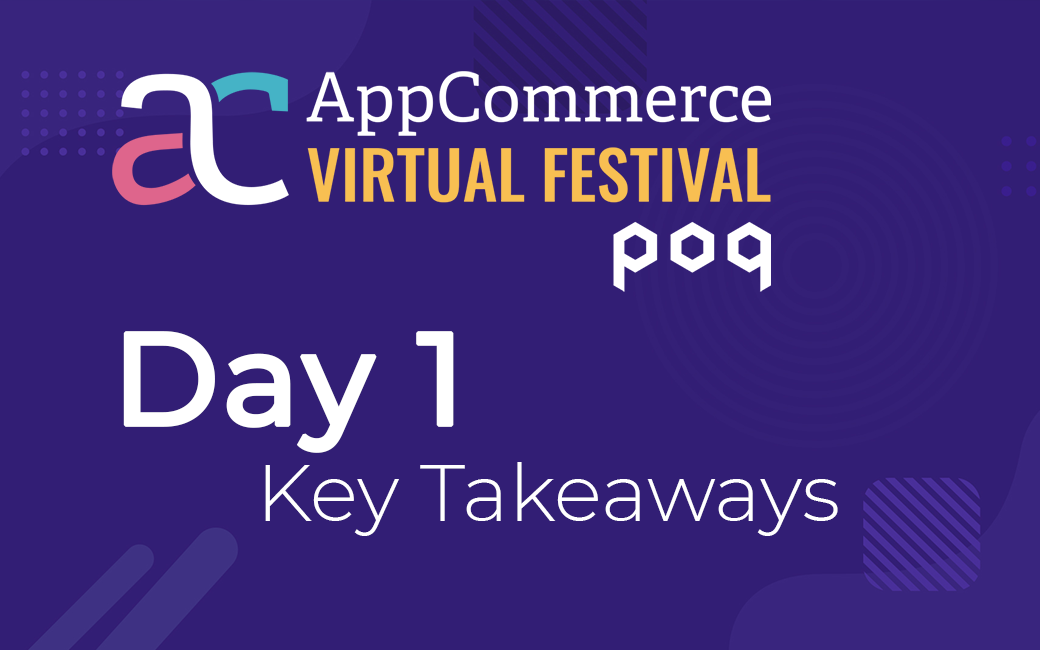
A big thank you to all of those who joined us to kick off the first day of the AppCommerce Virtual Festival with excellent content from our talented and experienced speakers. If you missed some sessions or would are keen to recap what was covered, keep reading as we cover the key takeaways from the event.
We kicked off the day with a warm welcome from Helen Slaven, CRO – Poq and Jay Johnston, CTO – Poq, who set the scene for the event and gave some insight into what’s coming up across the 3 days.
How AR & VR are Changing the Way Brands & Retailers Connect with their Customers
Miya Knights – Co-Author, Publisher of Retail technology and Head of Industry Insight, Eagle Eye Solutions
Jason Lovell – Head of Strategy, VR/AR at PwC UK
Marco Delvai – Vice President of Business Development, EMEA at Blippar
Dominic Collins – CEO & Co-founder at Darabase
To kick off the first session of the day, our panel of experts discussed how AR is becoming more widely adopted and many people don’t even realise they’re using it with the likes of Snapchat filters. As Dominic Collins, CEO & Co-Founder – Database, summarised nicely during the discussion, AR will go from “augmenting faces to augmenting places” as the technology continues to develop.
Jason Lovell, Head of Strategy, VR/AR at PwC pointed out that it is important for retailers to look at the problems they have in a business first and then see how they can apply AR to solve these problems. This is also how retailers can measure an ROI on the technology, for example if it increases conversion rates or reduces returns, the benefit to be business can easily be measured.
Marco Delvai, Head of Business Development EMEA at Blippar describes this nicely as graduating from a nice to have technology to a useful and productive technology to engage. Before the pandemic hit, AR was already becoming more commonplace in stores – with the likes of Nike and Adidas creating immersive experiences. AR will really be used to close the gap between digital and physical stores.

How Has COVID-19 Permanently Shifted Consumer Behaviour on Mobile?
Erekle Tokhosashvili – Ecommerce Expert at App Annie
Erekle set the scene for the day by examining current trends and behaviours across the app industry. As you might expect, downloads during the lockdown because of COVID drove high levels of downloads. A staggering 1.6 trillion hours were spent in apps in H1 alone, and 25% more time was spent in app in April compared to H2 2019 average.
Erekle went on to explain how the pandemic actually advanced mobile app adoption by 2-3 years in just 2-3 months. Meaning the average global time spent in apps reach 4hrs, 20 mins, that’s 27% of waking hours.
Erekle identified shopping apps as one of the fastest growing app categories in the UK, with 75% growth y-o-y of shopping app downloads in the UK in Q2 2020 and time spent shopping on app surpassing holiday 2019 shopping levels.
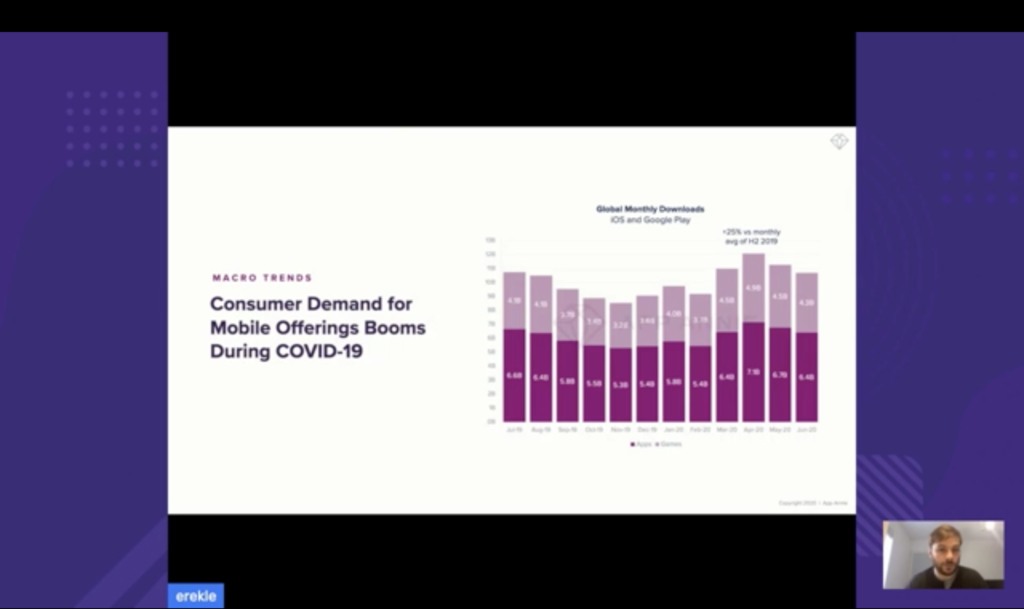
AppRising: Story of Growth: An Interview with Kurt Geiger
Gareth Rees-John – Director of Digital, Kurt Geiger
Gareth joined Poq’s CRO, Helen Slaven on the Main Stage to discuss how Kurt Geiger and it’s brands customers shopped before and during the pandemic. With a 45% digital / 55% store split for sales before COVID and digital skyrocketing when stores shut, Gareth went on to explain how the business rapidly changed it’s priorities in response to the pandemic and changing consumer behaviour.
Over the pandemic, instead of resorting to discounting, the Kurt Geiger brand choe to double down on retaining and engaging it’s loyal customer base. Promoting it’s core values and with the We Are One campaign and offering discount for NHS workers out of appreciation for the hard work they have been doing. Kurt Geiger embraced the D2C approach and quickly and rapidly changed the content it served to consumers especially through App Stories within the app.
Gareth went on to explain the reasoning behind Kurt Geiger’s decision to go with an app platform to create it’s app instead of a building in house, enabling the business to continue its’ focus on selling shoes and utilising the expertise and resources of Poq in order to launch an app within 12 weeks. For retailers considering launching an app, Gareth recommended that they thoroughly map out a business plan that makes sense for their own business and really scrutinise the numbers to ensure an app will work for you.
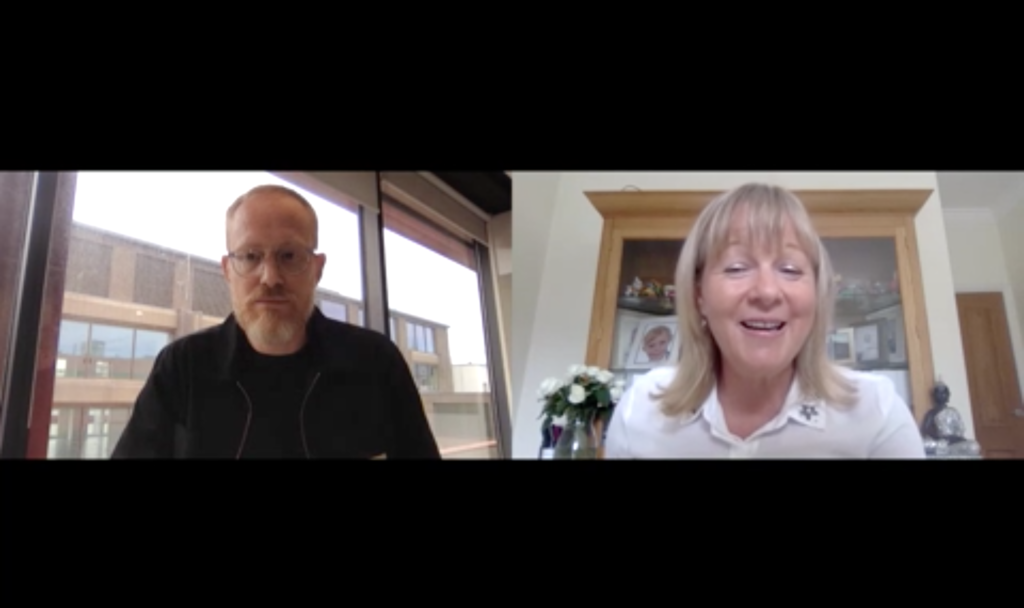
Beyond the Web: Creating a Unique Experience with App
Oyvind Henriksen – Co-Founder & SVP Product Strategy, Poq
Oyvind joined us on stage to share his 9 years of experience in app commerce. He provided tips on how apps should be used as a differentiator from retailers’ websites and connect the shopping experience online and offline, and engage and nurture app shoppers to become super customers.
From his experience Oyvind explained the best proven and tested method he has seen for retailers planning to launch an app is as follows:
- First app – MVP – establish metrics and audience, customer feedback for next iterations
- Good app – improve economics & business case at scale, integrations
- Great app – leverage strategic advantage, constant innovations, become winner in category
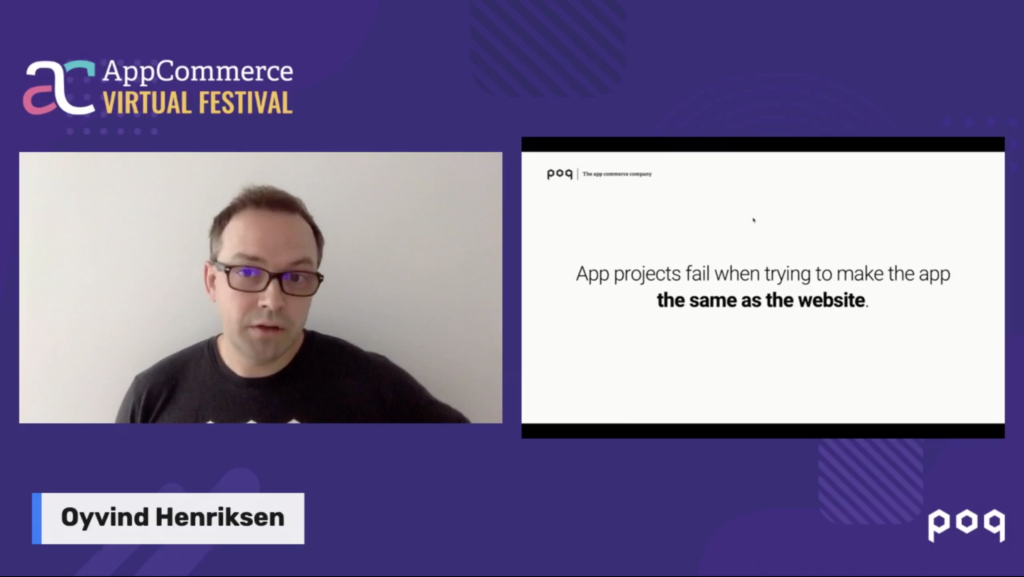
The Next Era of Digital Commerce: The PayPal Commerce Platform
David Smallwood – Director of Systems Integrator Partnerships at PayPal
David shared the latest insights from over 325 million PayPal customers and what retailers can do with PayPal’s platform to promote conversion both online and in-store. Over 64% of shoppers use PayPal and just having a PayPal checkout option drives conversion rates up by 12%. PayPal also shared information about it’s new Pay in 4 offering with no APR which will shortly be launching in the UK and will be available to the entirety of PayPal’s customer base.
In addition to PayPal’s Pay in 4 offering David went on to explain how with QR code enablement, shoppers will be able to checkout in-store completely contactless but using the PayPal app to scan and pay for their order. In addition to being completely contactless and minimising the risk of spreading COVID-19, retailers will get more information about those paying with PayPal than if they paid with credit or debit card. Enabling retailers to have better insight into who is shopping in-store and the kind of consumer behaviours they carry out.
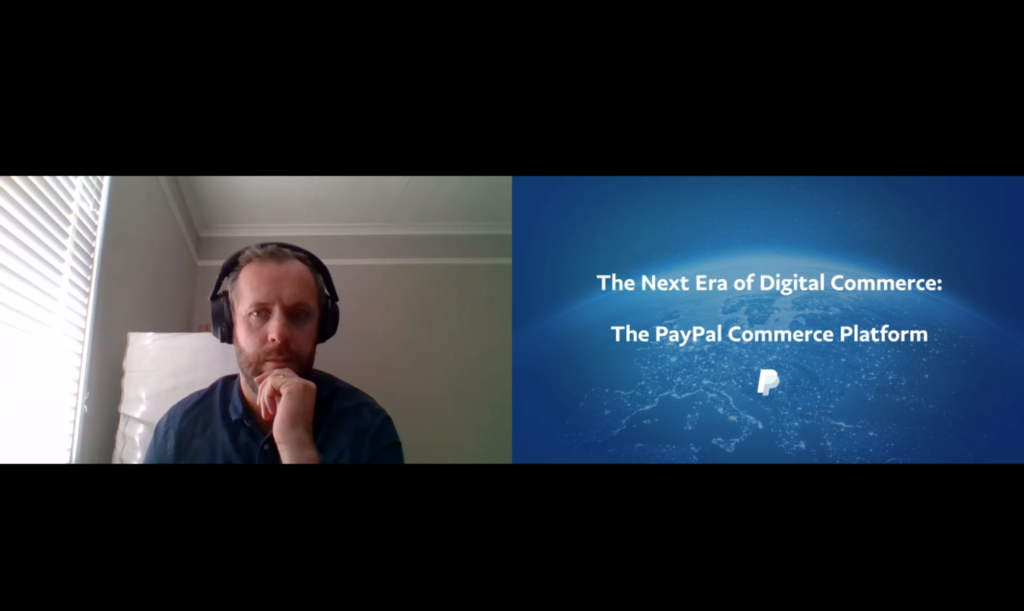
Engaging with a Gen Z Audience & Meeting their Digital Expectations
Simon Andrews – Founder at Addictive!
Chloe Smith – Digital Development Manager at Quiz Clothing
Ruth Arber – Head of Ecommerce & Retail – Snapchat
Victoria Watmough – Commercial Director, Klarna
For the second panel of the day, our group of retail an app commerce experts joined together to discuss the role Gen Z are playing in app commerce. As the mobile-native generation matures and their spending power grows.
Ruth explained that 88% of Gen Z have smartphones, 65% admit to sleeping with a phone next to them, 50% can’t go more than an hour without checking their phone and Gen Z generally use Snapchat as a communication platform to create and consume content. Gen Z engage with Snapchat to keep up with friends with authentic connections. Because the nature of the organic content is authentic, unpolished, fun and playful, brands need to reflect this in the content they generate.
Chloe informed us that 84% mobile of online traffic is mobile for Quiz Clothing and that user-generated content (UGC) from the hashtag #QUIZQUEENS and #STAYHOMEWITHQUIZ as a result of COVID, has got shoppers to engage with the brand. By using these hashtags, Quiz selects UGC from customers and reposts their images on the feed on it’s website, in Instagram stories and in App Stories where the images become completely shoppable. This showed that give something back resonates more with consumers and there’s no need to always push sales in messaging. In particular over the duration of the pandemic and with the increase in Zoom calls, Quiz have seen tops become the highest converting product category.
Meanwhile, Victoria shared that Gen Z payment trends align with being mobile-first. She stated that 30% of Gen Z use contactless payments vs 18 % or Millennials. Gen Z are also the most concerned about the security of their data and appreciate and trust brands that are open, transparent and authentic.
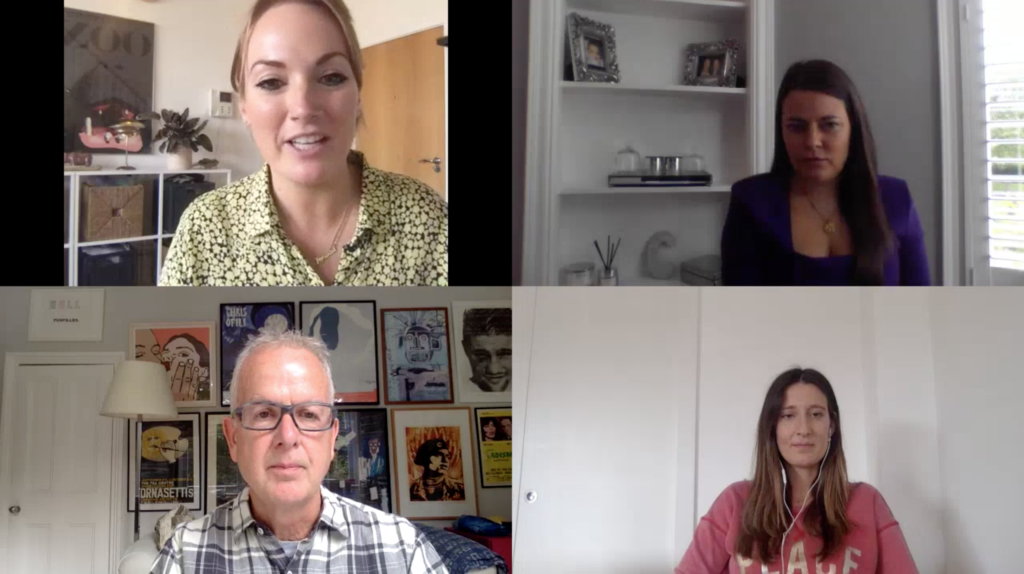
Survival of the Fastest – mCommerce, Covid-19 and iOS 14
Paul Wright – Managing Director, AppsFlyer
Paul identified that companies that are growing in this recession are those that provide essential consumer services, and with new social distancing measures the in-store experience has suffered. This has forced the adoption of digital by the masses and accelerated learning about digital channels. With this new adoption by generations that have never shopped online before, retailers now have the opportunity to target these generations with ads.
The demand for ecommerce apps in Q2 2020 matched the demand in the Q4 / holiday rush in Europe. And in terms of app marketing, use of retargeting campaigns has increased dramatically during lockdown, 50% up y-o-y. This has such an impact that in June 2020, retargeting conversion tripled.
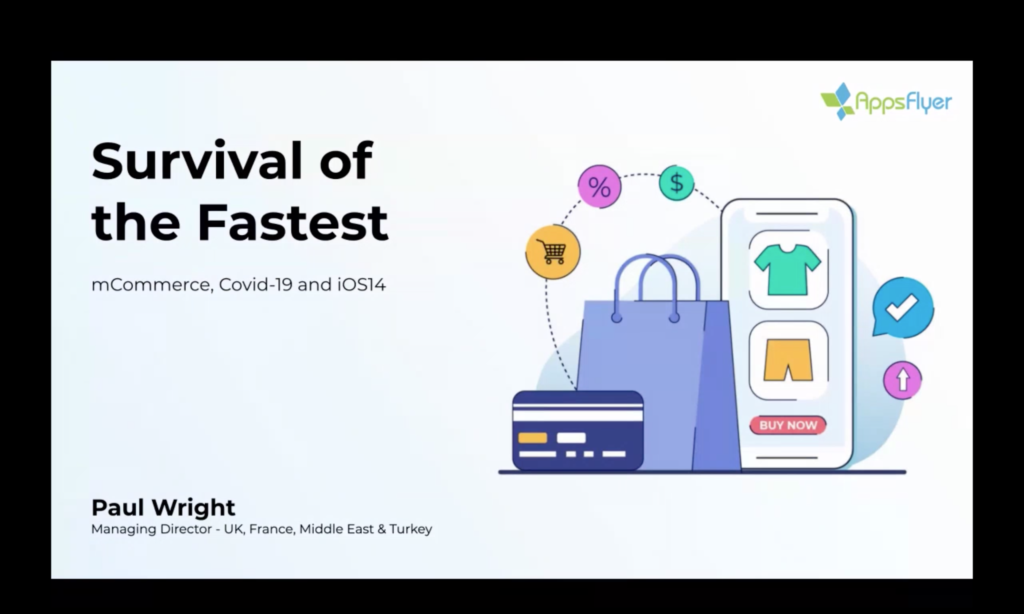
AppRising: Story of Growth, Card Factory
Glyn Williams – Customer & Multichannel Director at Card Factory
According to Glyn, within the gifting sector the personalisation of products has become important to consumers and is driving a lot of demand. Additionally, Glyn explained that convenience for card and gift shoppers really underpins the multichannel experience. During the start of lockdown, mobile traffic hit a staggering 75% for Card Factory, basket sizes grew and it saw 12 months worth of new online customers in just 8 weeks.
In order to stay ahead of the competition and to meet consumer demand for a more personalised experience, Card Factory will be launching an app to compliment it’s new ecommerce platform and over time will bridge the gap between the digital and physical store. In order to maintain a connected experience across its digital channels, Glyn explained that the app will share the same basket as it’s websites to enable shoppers to start their journey on one device and complete it on another.
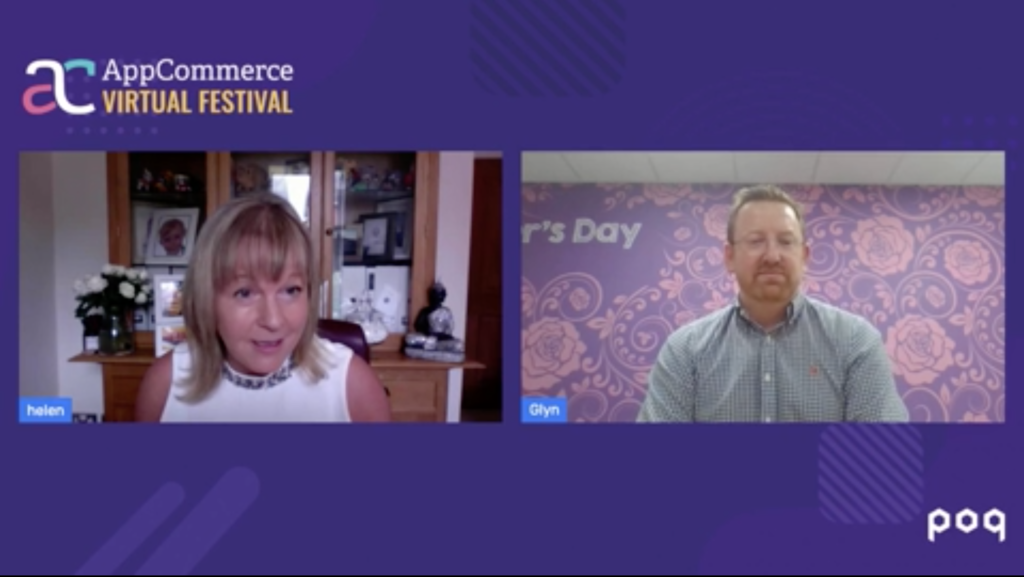
How to Drive Cost-Effective App Downloads & Conversions on Snapchat
Ruth Arber – Head of Ecommerce & Retail – Snapchat
Ruth gave a walkthrough of how Snapchatters are using the platform, the kind of content they share with each other and the authenticity they expect from brands.
With 238 million daily active users who spend 30 mins a day on the app and open the Snapchat app over 30 times a day, and this userbase is still growing 17% y-o-y.
Unsurprisingly, over lockdown, Snapchat use boomed. Sixty percent of Snapchatters are viewing content with sound on.
Ruth went on to explain the different types of ads you can set up with Snapchat: Snap Ad, Story Ad, and Collection Ads in order to either drive users to download your app or to re-engage those who already have your app installed. She also went on to give a step-by-step walkthrough of how you can set-up and your Snapchat ads. Keep an eye out for the recording of this session available on demand or get in contact with Ruth directly through the AppCommerce Virtual Festival platform.
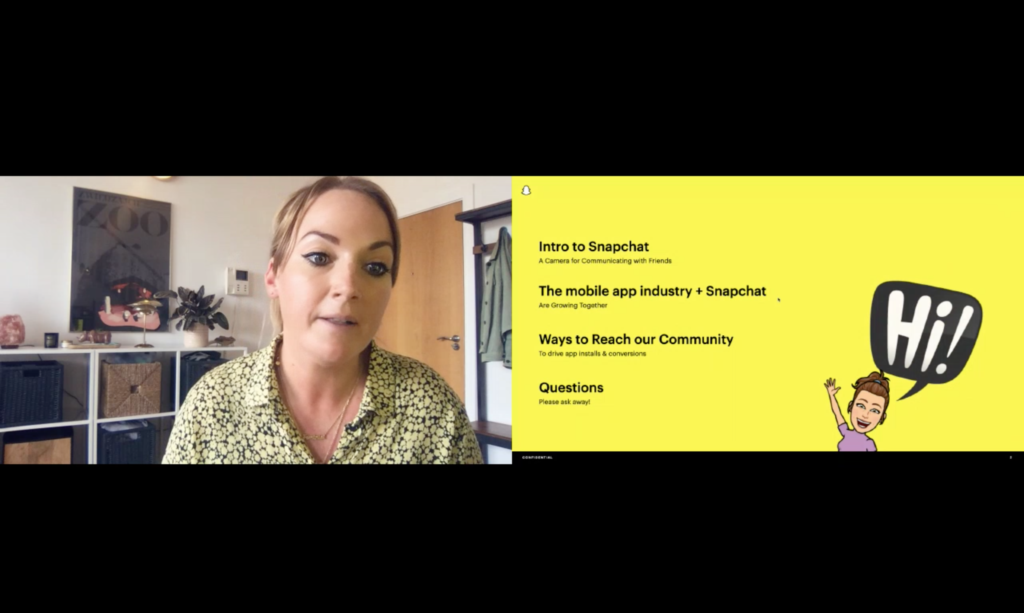
Competing against Amazon in the ‘New Normal’ Era
Miya Knights – Co-Author, Publisher of Retail technology and Head of Industry Insight, Eagle Eye Solutions
Miya gave some useful insights into what Amazon does well and the pitfalls it faces when trying to engage and retain customers. Starting with how Amazon became the ‘sells everything’ business that it is now, Amazon focused on how to sell and not what to sell, including being a tech company at heart. Amazon has since generated demand for fast, convenient and relevant shopping experiences and interactions. Where retailers can really compete against the giant is by focusing on how they sell and creating better and more personalised experiences connecting in-store and online, something the behemoth cannot do.
